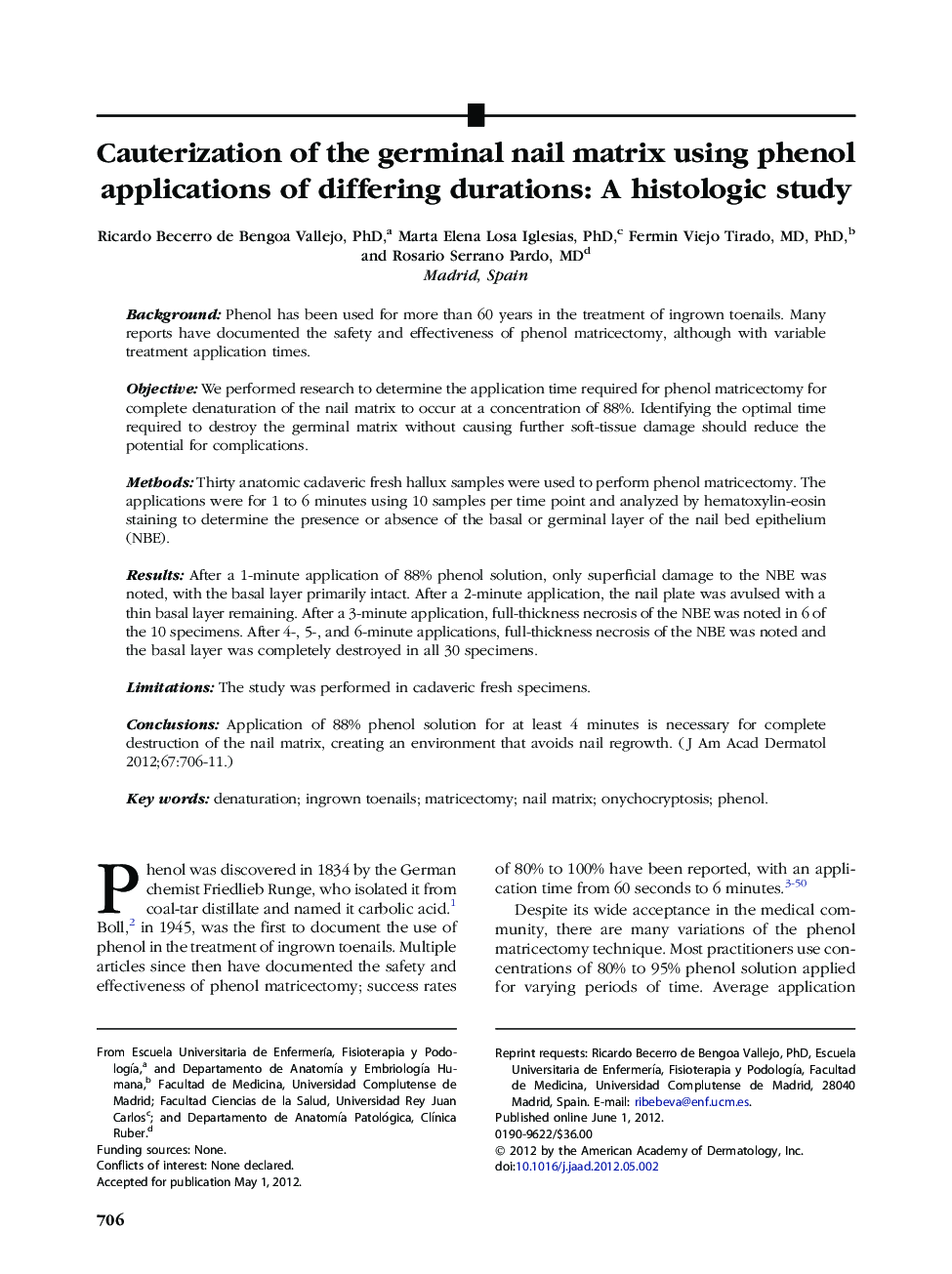| Article ID | Journal | Published Year | Pages | File Type |
|---|---|---|---|---|
| 3206223 | Journal of the American Academy of Dermatology | 2012 | 6 Pages |
BackgroundPhenol has been used for more than 60 years in the treatment of ingrown toenails. Many reports have documented the safety and effectiveness of phenol matricectomy, although with variable treatment application times.ObjectiveWe performed research to determine the application time required for phenol matricectomy for complete denaturation of the nail matrix to occur at a concentration of 88%. Identifying the optimal time required to destroy the germinal matrix without causing further soft-tissue damage should reduce the potential for complications.MethodsThirty anatomic cadaveric fresh hallux samples were used to perform phenol matricectomy. The applications were for 1 to 6 minutes using 10 samples per time point and analyzed by hematoxylin-eosin staining to determine the presence or absence of the basal or germinal layer of the nail bed epithelium (NBE).ResultsAfter a 1-minute application of 88% phenol solution, only superficial damage to the NBE was noted, with the basal layer primarily intact. After a 2-minute application, the nail plate was avulsed with a thin basal layer remaining. After a 3-minute application, full-thickness necrosis of the NBE was noted in 6 of the 10 specimens. After 4-, 5-, and 6-minute applications, full-thickness necrosis of the NBE was noted and the basal layer was completely destroyed in all 30 specimens.LimitationsThe study was performed in cadaveric fresh specimens.ConclusionsApplication of 88% phenol solution for at least 4 minutes is necessary for complete destruction of the nail matrix, creating an environment that avoids nail regrowth.
